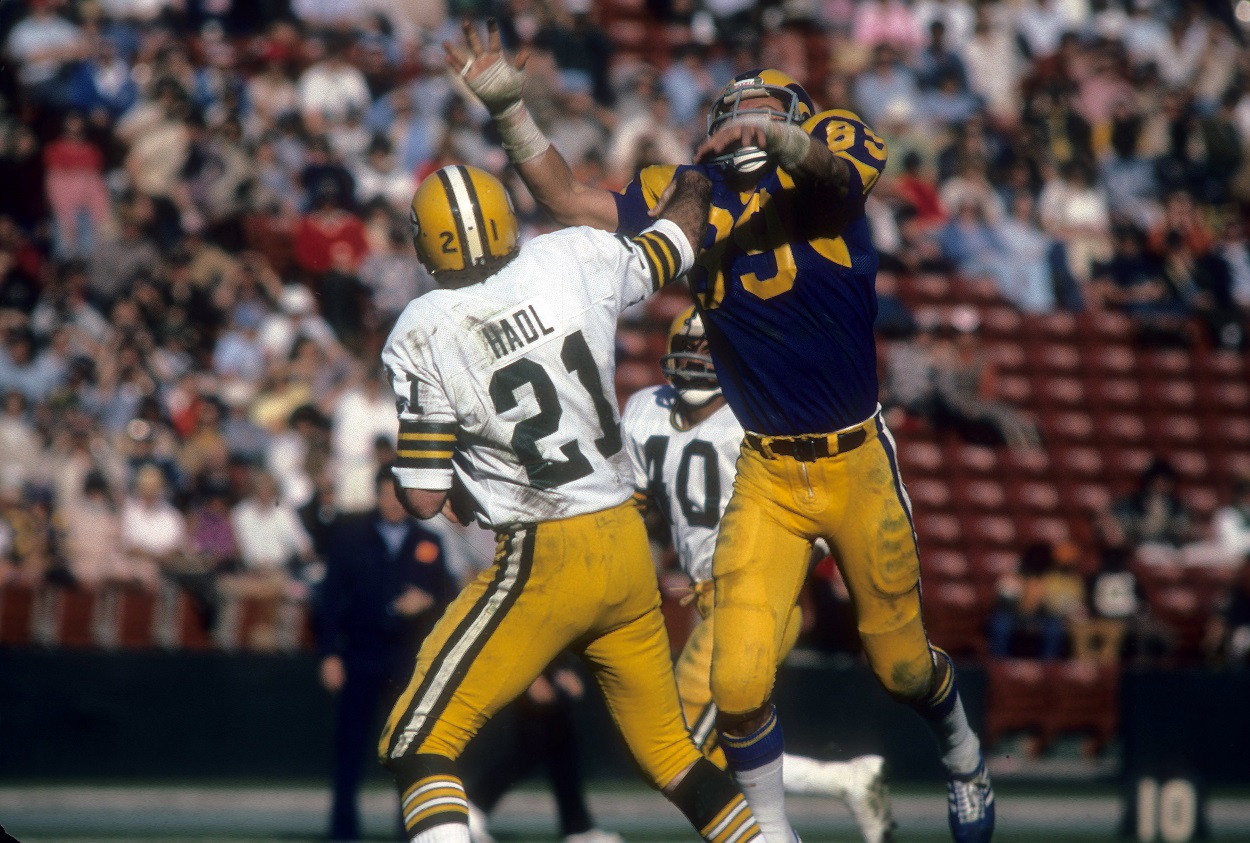NFL
The 1974 John Hadl Trade Set the Green Bay Packers Back Two Decades

The Green Bay Packers are one of the more successful franchises in today’s NFL. For the past two decades, they have been a frequent Super Bowl contender and are among the more profitable franchises in the league. This is quite a remarkable feat considering that they play in North America’s smallest market for a major professional sports team.
It wasn’t always this way. There was a time when Green Bay was considered NFL Siberia, and it dated back to a fateful trade in 1974.
The Packers hit a snag after Lombardi
RELATED: The Green Bay Packers Just Avoided a Major Postseason Disaster
The Packers were the unquestioned best team of the 1960s, winning five NFL championships in seven years, as well as the first two Super Bowls. But nothing lasts forever, and the legendary Vince Lombardi retired immediately after Super Bowl II. Green Bay fell from grace immediately.
It took until 1972 for the Packers to return to the playoffs, and the man who led them there was former Missouri Tigers head coach Dan Devine. Two years later, they started 3-2 and were in a good position to return to the postseason. All Green Bay needed was a quarterback. Their rotation of Jerry Tagge and Jack Concannon didn’t exactly inspire hope, so Devine needed to look outside for help.
Their first choice was New Orleans Saints quarterback Archie Manning, who had just been benched in favor of Bobby Scott. The two sides were close to a deal when Scott broke his foot, forcing Manning back into action. New Orleans pulled the plug on the transaction, forcing Green Bay to look elsewhere.
Dan Devine settles for John Hadl
John Hadl was an all-star quarterback once. That time was not 1974, but the early-to-mid-1960s, when Hadl led the San Diego Chargers. Under the coaching of Sid Gillman, Hadl helped revolutionize passing offense in football, and led San Diego to the 1963 AFL Championship.
That skill had deteriorated by 1974, and ironically, the Packers themselves had exposed it.
At the start of that season, Hadl was the starting quarterback for the Los Angeles Rams. In the fifth week, Hadl looked like a shell of his former self, completing only six of 16 passes and throwing two interceptions before leaving the game in the third quarter. Green Bay cruised to a 17-6 win, and Hadl looked utterly spent.
Still, Green Bay needed a quarterback — any quarterback.
Eight days after his loss to the Packers, Hadl himself became a Packer. The price Devine paid for his services was steep; he traded away the Packers’ first three draft picks in 1975 and their first two draft picks in 1976.
The John Hadl trade backfires in a big way

RELATED: Remember Jordan Love? He’s Already Played His Final Non-Existent Snap for the Green Bay Packers
At first, the Packers seemed to come out of the trade as the winner. Green Bay won in Hadl’s first three starts, giving them a 6-5 record and a decent chance to make the playoffs.
Then the wheels came off. The Packers lost their final three games, all to teams with losing records. Hadl was particularly bad against the lowly Eagles, completing only 16 passes out of 40 and fumbling twice inside his own ten-yard line.
Dan Devine left Green Bay immediately after the season to become the head coach of Notre Dame. His successor, Packers hero Bart Starr, could not right the ship, as he had few resources to work with. Devine had already traded away the team’s top draft picks for the next two years. From the day of the Hadl trade until the coming of Brett Favre, the Packers only made the playoffs once, during the strike-shortened year of 1982.
Were it not for the infamous Herschel Walker trade of 1989, perhaps the John Hadl trade would go down as the single worst in NFL history. It single-handedly sank the fortunes of the Green Bay Packers for the next two decades, and should serve as a cautionary tale for every general manager in sports.
Stats courtesy of Pro-Football-Reference.











